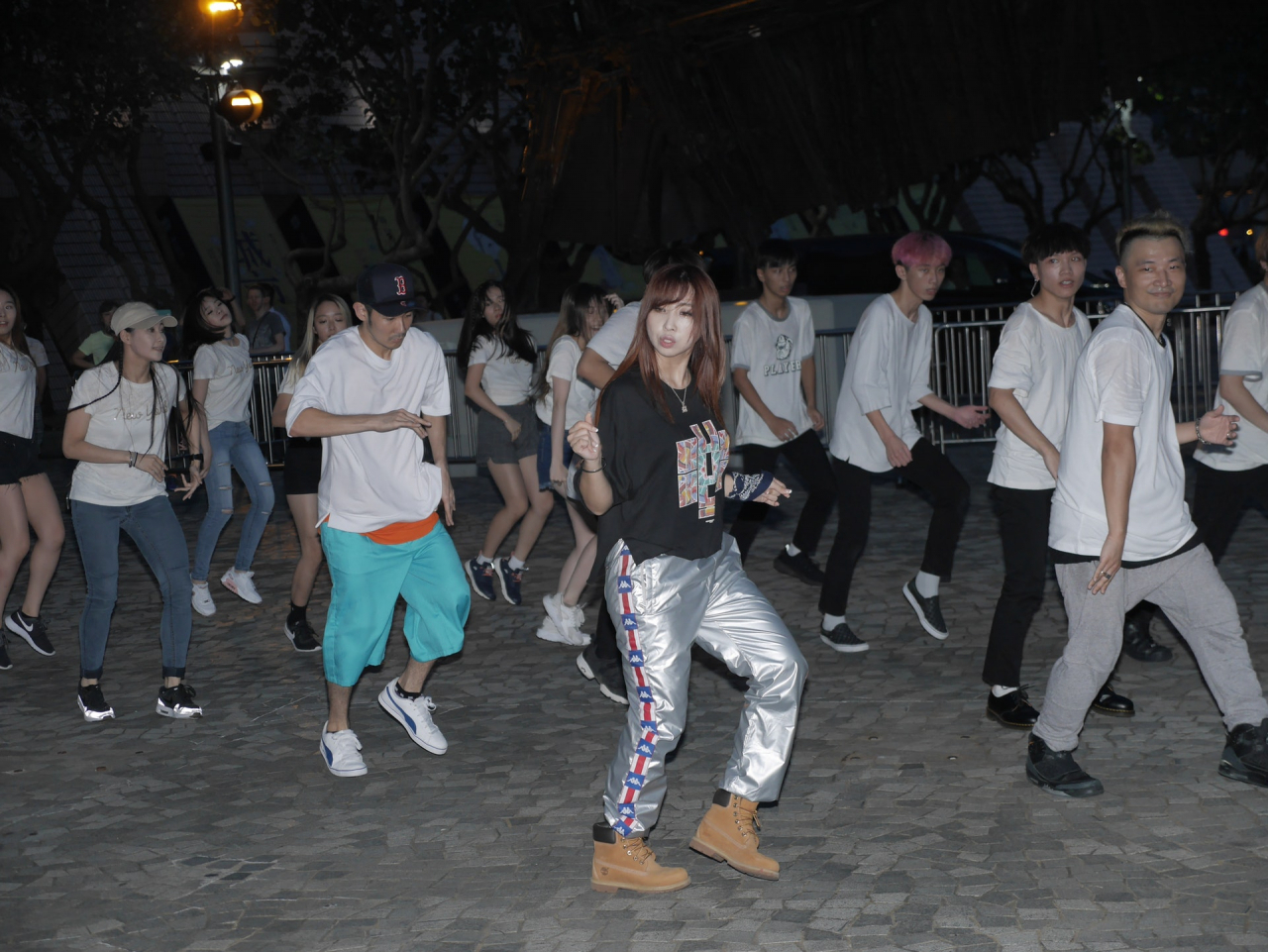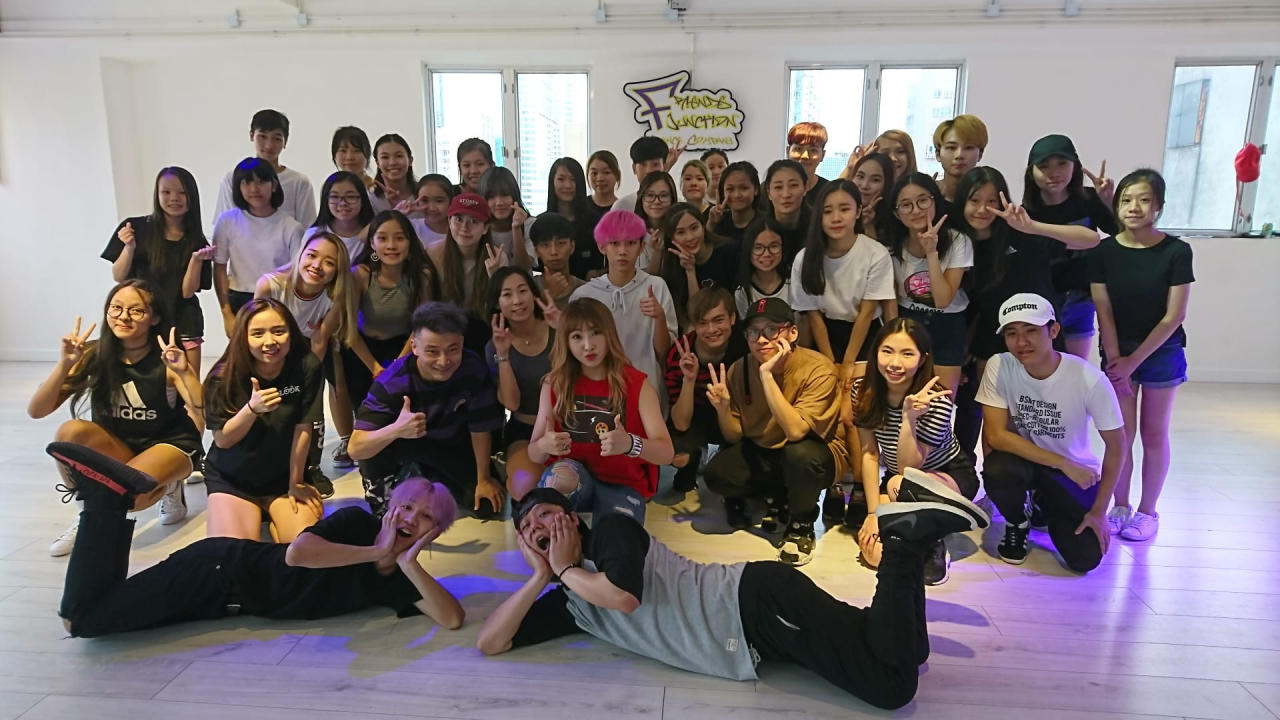Inside a Hong Kong hagwon for K-pop idol hopefuls
More opportunities for foreign nationals to break into K-pop market also mean fiercer competition
By Ng Naomi GaryanPublished : Aug. 8, 2023 - 17:28

HONG KONG -- Vivo Fung Lok-yin is a shy, soft spoken 20-year-old from Hong Kong, but the moment Blackpink’s “Shut Down” blasts from the speakers, she comes alive.
She levels a confident stare at her reflection in the mirror-covered studio as she dances to the hip-hop track, a tiny smirk gracing her face.
You wouldn’t think that four years ago, she could barely look herself in the mirror while dancing.
“I would say I’m a very shy person … I was too scared (to look at myself in the mirror),” Fung said.
Fung, who dreams of becoming a K-pop star, credits her transformation to the K-pop idol trainee program at Friends Junction Dance Company, one of the few dance studios in the city that offer such courses.
The training program, which launched in 2013, teaches students how to become an all-rounded performer -- how to dance, sing, command stage presence, shoot music videos and more -- the very basics of a laundry list of requirements Korean entertainment agencies have in looking for the next breakout success.
“I think (the training) has been fun. And it also helps me gain a lot of confidence in myself in terms of dancing and singing, and not be scared to show myself to others,” said Fung, who joined the program in 2019 and now also teaches classes at the studio.
These dance academies have cropped up in Hong Kong and elsewhere around the world, playing an important role in grooming aspiring artists, as major K-pop labels increasingly look further afield for talent.
Taking a Korean approach
Each class has no more than six students who train in weekly four-hour sessions. The classes have an emphasis on dance, but students are also coached on posing for photos, singing and what to say in Korean during auditions.
Most of them are in their teens -- the youngest to join was 8 years old at the time. More than 100 students have trained for longer than a year in the trainee program, according to FJDC’s director, Kenny Ng Ka-wai.

FJDC, which has four branches across the city and 20 instructors, has worked with the famous 1Million Dance Studio, whose instructors have choreographed for EXO and Twice, collaborated with RBW Entertainment, which houses girl group Mamamoo, as well as conducted auditions for their students with the biggest players in the K-pop industry: SM Entertainment, JYP Entertainment and YG Entertainment.
Ng, 39, has taken what he’s learned from them and modeled the program after how Korean entertainment companies teach their idols-in-training, he said, without the marathon dance rehearsals or diet plans. One thing FJDC has incorporated includes conducting regular evaluations to analyze each student’s strengths and weaknesses to help them improve.
“Korean companies have a very systematic and targeted method of training, and it’s not just dance. It’s physical fitness, breathing techniques and (about cultivating) a diverse set of skills,” Ng said.
“We reference their training, but we don’t ask students to train like Korean idols do for over nine to 10 hours a day. They also need to study.”
The program has had moderate success, with FJDC graduates going on to become trainees in Korea, some have debuted in China and two are singers in Hong Kong, Ng said.
One of the program’s students, Ho Sze-ching, was a Hong Kong contestant on Mnet survival audition show “Girls Planet 999.” Ho was one of the 99 -- picked from 13,000 applicants -- competing for a spot in a nine-member girl group. She was eliminated in episode five of the 12-part reality show.

Global recruitment drive
Korean entertainment agencies began recruiting trainees from various countries to become part of K-pop groups from early on, holding auditions all over the world. Super Junior, which launched in 2005, had three non-Korean members. Many others followed suit, from the likes of Twice to Seventeen and NCT.
More recently, Blackswan, initially comprising members of both Korean and other nationalities, has been rebranded as a K-pop quartet of exclusively non-Koreans that hail from Senegal, Brazil, India and the US.
Of the four major labels in Korea, SM, JYP and YG were unable to disclose the proportion of foreign nationals among their trainees or the list of nationalities, citing confidentiality, in responding to an inquiry from The Korea Herald.
At Hybe, 28 percent of their trainees under its domestic labels are of foreign nationality as of this year, according to the firm.
“Although we don’t have a particular strategy aimed at increasing the proportion of foreign trainees, Hybe supports the selection and development of trainees irrespective of country or region, as we need talented artists who will be active globally under the multilabel system,” a Hybe spokesperson said by email.
Lee Gyu-tag, an associate professor at George Mason University Korea specializing in the globalization of K-pop, said companies are seeking more international lineups to capitalize on K-pop’s popularity outside Korea, especially in China, Japan and Hong Kong.
If you look at bands elsewhere, “it’s not really easy to find a US band with non-US citizens. How about J-pop? When you see a Japanese band, there are not many non-Japanese in Japanese bands, (and) Chinese bands as well,” Lee said.
He suggested that the proliferation of K-pop dance academies across Asia could also be because they are hoping to replicate the success of the K-pop training model to build up their own pop groups locally.

More opportunities, fiercer competition
Both Lee and Ng say there are more Korean entertainment companies looking abroad for new blood, creating more opportunities for those who want a music career in the K-pop industry. But that doesn’t make it any easier for them to stand out among the throng of singer-dancers.
Another FJDC trainee, Megan Leow Su Lynn, 15, has lost count of the number of auditions she’s been to and failed.
“The biggest goal and biggest dream would be of course debuting as an idol. But I think (you also need to be) realistic. You could be very good but maybe you still won’t make it in,” said Leow, who has been in the program since September 2020.
The repeated cycle of trial and rejection is “disheartening,” but also a learning lesson, she said.
“There are some days where I go home and start crying about it three days in a row, and there are other days where it’s kind of like, well this is a learning opportunity, let’s move on,” Leow said.
“This is what I've been trying to do and what I'm still learning to do -- is to kind of pick myself up and learn to see what I've been lacking and what I've done well. Apply it to the next one.”

Do you have what it takes?
There’s also the matter of what kind of talent labels are looking for.
“Each company at different times will have different criteria. Of course they’re not going to tell you what kind of people they want, but they are looking for those who have star potential,” said Ng of FJDC.
Hong Kong has produced several K-pop stars over the years, namely Jackson Wang from GOT7, Lucas in NCT and Elkie Chong in CLC.
While what Korean entertainment agencies are looking for is anyone’s guess, Ng said he is more focused on nurturing students to grow and flourish so they can thrive in any environment.
“What I hope for the students in this trainee program is that they can reach the goals that they set for themselves, whatever that may be, figure out who they are, and build their confidence,” he said.
Students Leow and Fung are aware that becoming K-pop idols may be a pipe dream, but their passion for music and dance is what keeps them going.
“Sometimes people would say you’re crazy, but I don't think there’s anything wrong as long as you’re working hard” and pursuing what you want, Leow said.
“At the end of the day, even if I don’t make it … at least I can hone my passion and be happy doing something I really enjoy.”



















